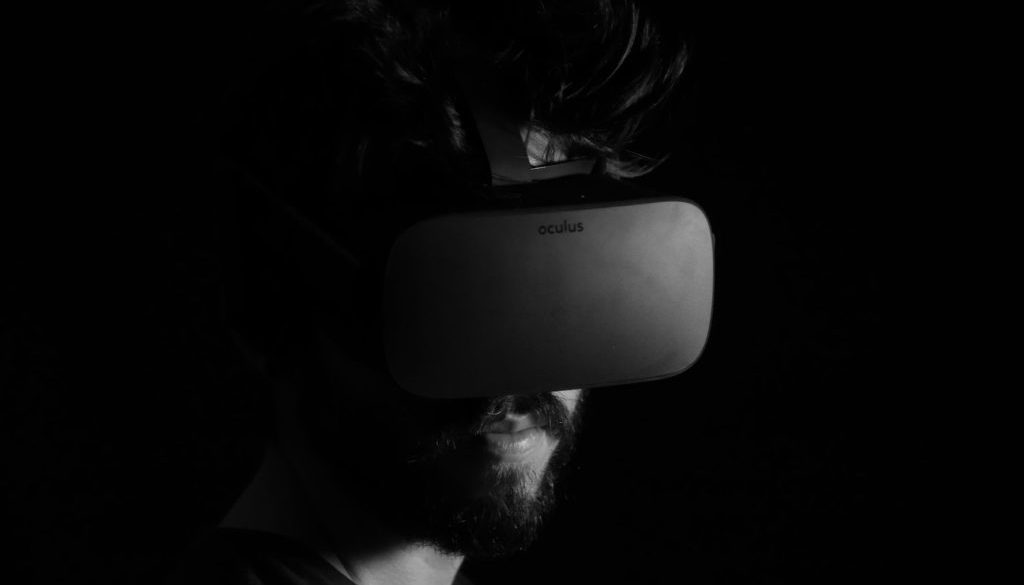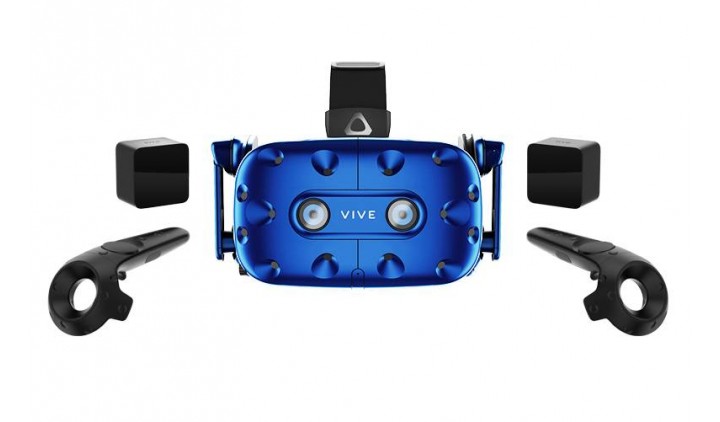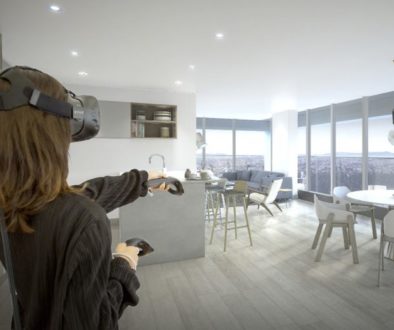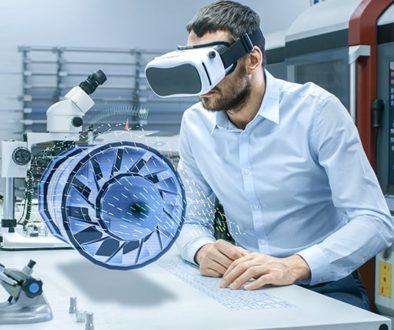HTC Vive Pro, Oculus Go, Magic Leap: What to Expect from the Newest Headsets
Rampant innovations and disruptive new technologies in high tech industries tell us that a digitally-transformed future is inevitable. Virtual reality and augmented reality developed a lot in 2017, and there’s much more to come in 2018, including anticipated headsets set to revolutionize VR and AR. It was a dream of almost every virtual and augmented reality fan to put on a headset, go and mix digital with the real. That said, we are rapidly heading towards the cybernated future.
To maximize the benefits of VR and AR goodies, corporations solved a few issues that had been bothering the VR community for a long time — high price, wires and slow performance — and released the most anticipated and truly groundbreaking hardware.
Magic Leap One
Florida-based startup Magic Leap has already unveiled how Magic Leap One looks like and we can’t wait but experience how physical world can be transformed by just looking at it in a pair of goggles.
Magic Leap One technically resembles Google Glass and HoloLens. Basically, it overlays 3D computer graphics onto your perspective of the real world via glasses with transparent lenses.
Digital lightfield, one of the platform features, enables you to clearly see holograms at various distances. By generating digital light at different depths and merging smoothly with natural light Magic Leap One allows human brain to naturally treat digital objects as the real ones. Sensors inside the system detect real world environment, “see” your surroundings the same way you do and allow you to interact with lightfield objects.
You may be wondering, ‘What is it that makes Magic Leap One stand out from other mixed reality wearables?’ The thing is that it produces lightfield objects in high-fidelity, gaming-quality graphics, allowing VR, AR and MR engineers to give virtual animations, objects and characters a sense of depth and make them look real. Empowered by a strong sound system, lightwear mimics the real world and relays distance and intensity with amazing quality so you know where a sound is coming from.
The notorious Magic Leap One consists of lightwear, a controller and a lightpack that houses the system’s processor and battery. Together, the device maps the space around you and tracks your movements. And, to those who already decided to buy a pair of magic glasses, they are available for pre-order.
HTC Vive Pro
The most advanced and long-awaited VR headset is out there, and that’s deeply changing the current wave of AR and VR development. With an optimal center of gravity, increased point of weight support and quick adjustment dial, HTC Vive Pro equally dispenses the weight of the headset to make it convenient and lightweight.
To enhance the overall experience and to deliver for true-to-life immersive audio, the newest Vive has been integrated powerful digital amplifier and dual microphones. Users also can choose between Alert Mode and Conversation Mode to hear what’s going on in a real world without the need of taking off the headset.
Vive Pro headset features a much higher-resolution screen (2880 x 1600615 PPI), displays super-rich colors and tiny details which finally diminishes a major mismatch between inducing high expectations and meeting consumers’ needs and wants. Except for enhanced optics and optimized ergonomics, HTC has released an early access build of a new SDK that enables developers to unlock and utilize the HTC Vive Pro’s front cameras. The idea of being able to switch between AR and VR or, what’s more, to incorporate the real world into the virtual experiences seemed always appealing and now HTC has embodied the dream of many.
Tracking your movements in a 10-foot cube instead of just from your seat is pretty impressive, as it allows you to unplug the headset from the computer and move freely thanks to a wireless dongle accessory.
Oculus Go
There’s no getting around the fact that in order to run either the Gear VR or the Oculus Rift you need an expensive phone or PC, which is quite pricey for most people. That’s not the case with Oculus Go, which is standalone VR solution, the kind of headset anyone can benefit from, by just wearing it and going anywhere they like, as the computer with the display is inside the headset.
 Considering the difference between the Oculus Rift and Oculus Go, the latest has higher resolution (2560 x 1440) and renders everything in user’s periphery at a lower resolution, still giving users distinct visuals of what they’re focusing on. Moreover, Oculus is using Fixed Foveated Rendering to make the display clearer. Once you’re inside the VR world, you can go anywhere you want, as there’s no need for cables. Jason Rubin, the VP of Content with Oculus said that such standalone headsets are the future of virtual and augmented reality.
Considering the difference between the Oculus Rift and Oculus Go, the latest has higher resolution (2560 x 1440) and renders everything in user’s periphery at a lower resolution, still giving users distinct visuals of what they’re focusing on. Moreover, Oculus is using Fixed Foveated Rendering to make the display clearer. Once you’re inside the VR world, you can go anywhere you want, as there’s no need for cables. Jason Rubin, the VP of Content with Oculus said that such standalone headsets are the future of virtual and augmented reality.
Except for sleek and comfortable design, Oculus Go has a unique audio integration. Instead of headphones, audio is fed in from the straps themselves, which makes the sound fine enough. By the way, the price is $199, which is affordable compared to other wireless headsets.
Final Thoughts
All in all, in order for VR and AR goodies to really take off across the mass market, they needed to overcome a number of technological challenges that had been standing in their path, such as high price or tangled cables that don’t allow you to move the way you want. On the whole, it’s going to take a lot of effort, skill, and ingenuity to create desirable wearables and make AR and VR experience look as if in the real world. And high tech corporations are heading in the right direction.






